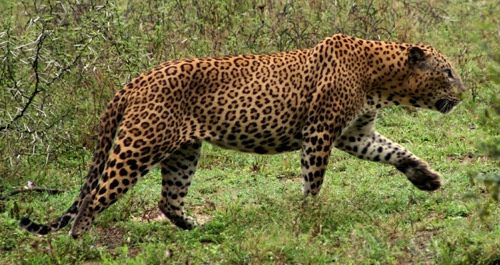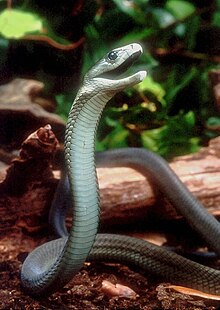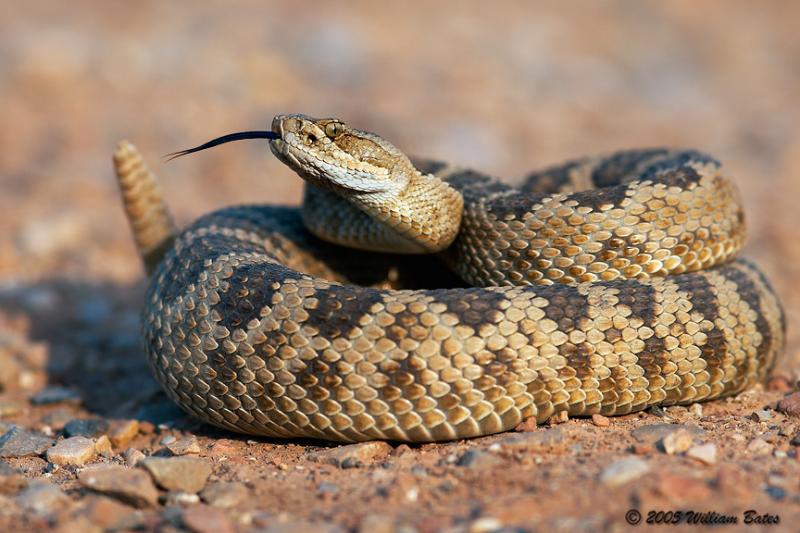My cuz wants to know some stuff about it so if you have any data to share I would appreciate it, you can also post pics, vids and what not.
![]()
*This image is copyright of its original author
Probably an overlooked understudied cat, but found relatively recently. I haven't found much on them with a few simple google searches, but maybe I'm just lazy. I found this at least.
"Ecology and conservation of Formosan clouded leopard, its prey, and other sympatric carnivores in southern Taiwan
![]()
*This image is copyright of its original author
View/Open
Chiang_ETD3.pdf (3.943Mb)
Chiang_ETD.pdf (3.597Mb)
Date
2007-11-14
Author
Chiang, Po-Jen
Metadata
Show full item record
During 2000-2004 I studied the population status of the Formosan clouded leopard (Neofelis nebulosa brachyurus) and the ecology of its prey and other sympatric carnivores in the largest remaining lowland primary forest in southern Taiwan. My research team and I set up 232 hair snare stations and 377 camera trap sites at altitudes of 150-3,092m in the study area. No clouded leopards were photographed in total 13,354 camera trap days. Hair snares did not trap clouded leopard hairs, either. Assessment of the prey base and available habitat indicated that prey depletion and habitat loss, plus historical pelt trade, were likely the major causes of extinction of clouded leopards in Taiwan.
Using zero-inflated count models to analyze distribution and occurrence patterns of Formosan macaques (Macaca cyclopis) and 4 ungulates, we found habitat segregation among these 5 herbivore species. Formosan macaques, Reeveâ s muntjacs (Muntiacus reevesi micrurus), and Formosan serows (Nemorhaedus swinhoei) likely were the most important prey species of Formosan clouded leopards given their body size and high occurrence rates in lower altitudes. In contrast, sambar deer (Cervus unicolor swinhoii) tended to occur more frequently as altitude increased. Formosan macaques exhibited seasonal differences in occurrence rates and were absent at altitudes > 2,500m in winter. Only Formosan serows showed preference for cliffs and rugged terrain, while the other 4 species, except wild boars (Sus scrofa taivanus), avoided these areas. Habitat segregation in forest understory and structure were more pronounced among the 4 ungulates. Forest structure rarely affected occurrence rates of Formosan macaques on the ground.
Niche relationships of the other sympatric carnivores were studied through habitat, diet, and temporal dimensions. Resource partitioning by carnivores was observed. Altitude was the strongest factor explaining the composition of the carnivore community in the local study-area scale and in the landscape scale across Taiwan. Carnivores could be divided into 2 groups: low-mid altitude consisting of Formosan ferret badgers (Melogale moschata subaurantiaca), gem-faced palm civets (Paguma larvata taivana), lesser oriental civets (Viverricula indica taivana), crab-eating mongooses (Herpestes urva formosanus), leopard cats (Prionailurus bengalensis chinensis), and feral cats (Felis catus), and the mid-high altitude group consisting of yellow-throated martens (Martes flavigula chrysospila), Siberian weasels (Mustela sibirica taivana), and Asiatic black bears (Ursus thibetanus formosanus). Carnivore richness was higher at mid altitudes where these 2 groups overlapped (i.e. mid-domain effect). The low-mid altitude carnivores were more nocturnal and tolerant of human activity and forest alteration except crab-eating mongooses, which were diurnal and avoided human encroachment. Similar to crab-eating mongooses, the mid-high altitude carnivores also avoided human encroachment and were diurnal except for Siberian weasels, which were more nocturnal. Diet summary based on their major food items for all sympatric carnivores revealed 3 groups of foragers which foraged on: invertebrates, small mammals, and plant fruits. Felidae, yellow-throated martens, and Siberian weasels preyed on small mammals. Asiatic black bears and gem-faced palm civets ate mostly plant fruits. The other 3 carnivores were mainly invertebrate foragers. These 9 carnivores partitioned resource uses in the 3 niche dimensions except for some overlap in resource use by leopard cats and feral cats.
Prey base for Formosan clouded leopards and the carnivore richness in Taiwan were found to be lower in areas with higher levels of human activity. On the other hand, Formosan macaques and ungulates could become over-abundant without human hunting and top carnivore predation. Mesopredator release may occur because of vanishing top carnivores, causing reduction of the lower trophic level prey species. It is important to assess the cascading impacts of the loss of the Formosan clouded leopards and Eurasian otters (Lutra lutra chinensis) and the declining Asiatic black bears and to consider reintroduction of Formosan clouded leopards, as well as active management of the other larger mammals. These results provided baseline information for reintroduction of clouded leopards and management of their prey and generated new hypotheses regarding the ecology of these large mammals for future investigation.
URI
http://hdl.handle.net/10919/29674
Collections









